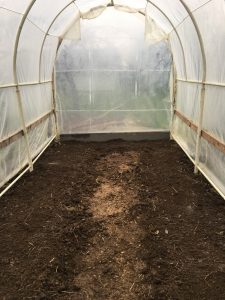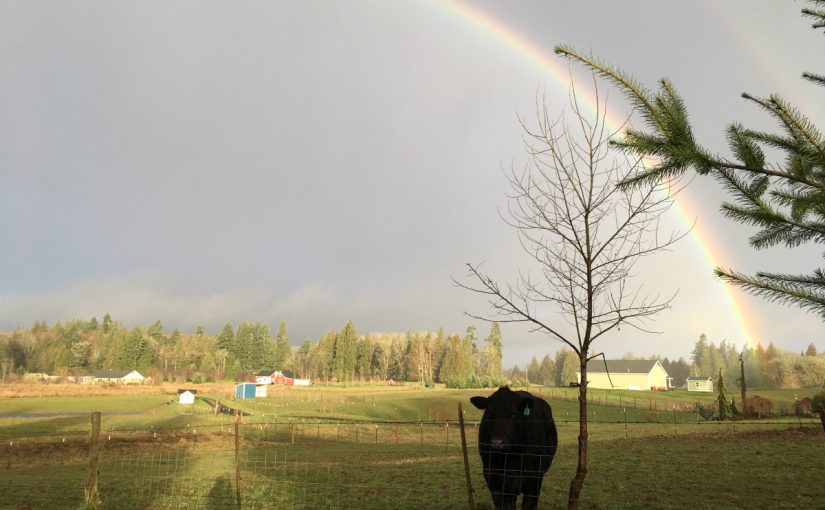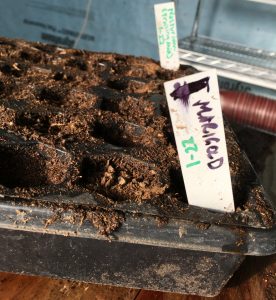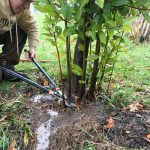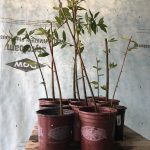MONDAY
Monday morning, Anika and I did a farm evaluation for Doug. After walking the farm and asking questions of both Doug and Maya and Phelan (of Little Big Farm, leasing part of Doug’s land), we were tasked with coming up with a list of pros and cons to the parcel of land. In addition to this summation, we were also asked to give an evaluation of some solutions to the drawbacks as well as suggestions for Doug going forward. Here is some of our findings:
PROS:
- Lots of worms: good soil fertility
- Good working relationship with neighbors
- Sloping upper fields with SW at lowest point (good for sun exposure, little bit of protection from N winds; excess water flows into drainage pond)
- Not close to forest: less forest disease pressures
- High water table good for some plants (i.e. dogwood, blueberries)
- Because it was previously pasture, easy to maintain weed pressure simply by mowing
- SOLAR!!!! (besides initial cost, not spending a ton of money of electricity especially with walk-in cooler): located in an open area also helps increase energy production
- High organic matter in soil
- High bird population: less insects
- Not on top of neighbors, area to expand (lots land he’s not using)
- Bees interspersed around property on various neighbor land
- House is on the land being farmed (if there’s ever a crisis, can react quickly), cuts down on time commuting
- Barn infrastructure already on property
- Flowers: not too worried about pests
- Companion planting: putting herbs between apricots and others to decrease pest interest in cash crops
CONS:
- Neighbors use pesticides (but they’re pretty far away and this isn’t a certified organic farm)
- West pasture floods during the winter; could potentially harm plants out there (especially if they don’t like sitting in overly wet soil or wet roots)
- Water passing through field: could deplete water-soluble nutrients, potentially for soil erosion
- Water passing under driveway—if high enough, could wash out driveway.
- Exposure: prevailing wind from SW but no wind breaks to block that wind (although not a ton of annuls, excessive wind procures shorter, stockier stems; florists want long and tall stems), there is
- Pest populations: deer, rabbits, voles, mice—especially for deer, entire grow space must be enclosed, voles could do serious damage to plants/roots. Keep fence intact (close rabbit holes). Get a good hunting cat/dog.
- Large goose population: spread of disease (not growing produce but Little Big Farm is), solution: keep boots clean, keep birds off immediate property (but they do eat slugs!)
- Little Big Farm could introduce pathogens (growing brassicas and nightshades)
- Fungal pressures: especially on peonies (botrytis)
- Copper deficiency: potentially increase slug/snail populations and could lead to mold problems, BUT too much is toxic to plants. If spraying some fungicides don’t add copper.
- Drainage issues around spigots: easily floods around them, not necessarily usable
- No water source for west pasture: wouldn’t be able to plant anything needing irrigation (if wanting to expand into that area, would need to plant something that wouldn’t mind being dry in the summer)
- Having cows next door will attract cucumber spotted beetle and other pests
- In summer, if windy, will have to irrigate a lot more
- Annuals can’t be rotated
- Can’t put in a commercial well on site here, would be very difficult (maybe impossible) to get another
SUGGESTIONS:
- Roof compost pile and add concrete floor (prevents runoff/leaching): can have the NRCS collaborate in that process
- Plant windbreaks: could even be harvested from once its big enough and could use it as a part of IPM (and collaborate with NRCS)
- Plant blueberries right by swampy area in west pasture (prevent erosion)
- Plant some sort of shrub at bottom of upper field (SW) to prevent erosion of driveway during heavy rains…
- Purple contorted filbert? (every season it could be harvested and sold to the floral market, “Red Dragon” variety is blight resistant)
- Tiger fig? (leaves and fruits are beautiful on stem, could also be sold)
- Cover crop Little Big Farm’s area before putting it into production
- Take out blackberries along trail and replace with something harvestable
- Chip brush pile (could rent chipper) and use directly in field (save some back and forth to get mulch)
- Sloping upper field could yield itself nicely to hugelkultur
- Long-term greenhouse (but already know that)
- Could collect rain water: especially in west pasture where there is no water access
- Prevention of botrytis:
- Only cut when dry
- Get rid of infected leaves
- Clean pruners between each individual plant (keep clorex wipes in pocket at wipe after each plant)
- Copper and sulfate organic fungicide help with botrytis
- Neem oil?
- Mulching around plants will trap fungal spores
- Shake dew off plants (make sure its not wet for too long)
- Homemade solution: 2Tbsp baking soda, couple drops of dish soap, and 1gal water (commercial fungicides won’t work)
Monday afternoon Anika worked on converting a kitchen shelving rack into a grow chamber while I seeded. These seeds aren’t destined to be out in the field, however, they were just to test germination in the garage greenhouse to ensure it is actually going to work as a greenhouse.
What we planted:
- 36 beans, burgundy
- 30 marigolds, variety unknown
- 6 nasturtium, trailing mix
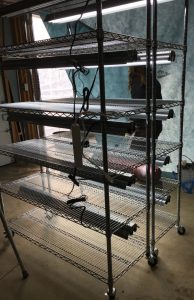
Photo: Allie Kuppenbender
WEDNESDAY
Contrary to the weather report, it was not raining when we arrived Wednesday morning which we took advantage of and weeded the asparagus. We then pruned a red elderberry tree back by the barn, which really meant cutting it back to the ground. The branches with their buds looked really cool so Anika and I took them home. Not exactly what I’m going to use them for. We also got to work potting up all the yarrow we dug up and divided. Nowhere near close to being done with that endeavor. Doug wants to see works better: individually potting yarrow and leaving it in the greenhouse or healing it in a large trough filled with soil outside. He wants to see if it is worth all of the time to individually pot it up and all of the greenhouse space it takes up or if leaving it outside will work just fine.
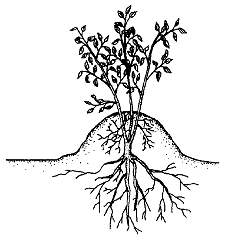
Photo: NC State Extension Publications
We also dug up and potted some California Bay shoots Doug had been mound layering for that purpose. There were nodes present so the method works in terms of getting the plant to start to root. Hopefully they actually end up rooting now that they are cut and potted inside the greenhouse. We also used more of our willow water that we made last week to both soak the sprouts in before potting them up and to water them after they were potted up.
Our final task Wednesday was to prepare the unheated greenhouse structure for the freesias that are going to be planted in there. We raked and broad forked before adding 2 cups of bonemeal to each bed.
